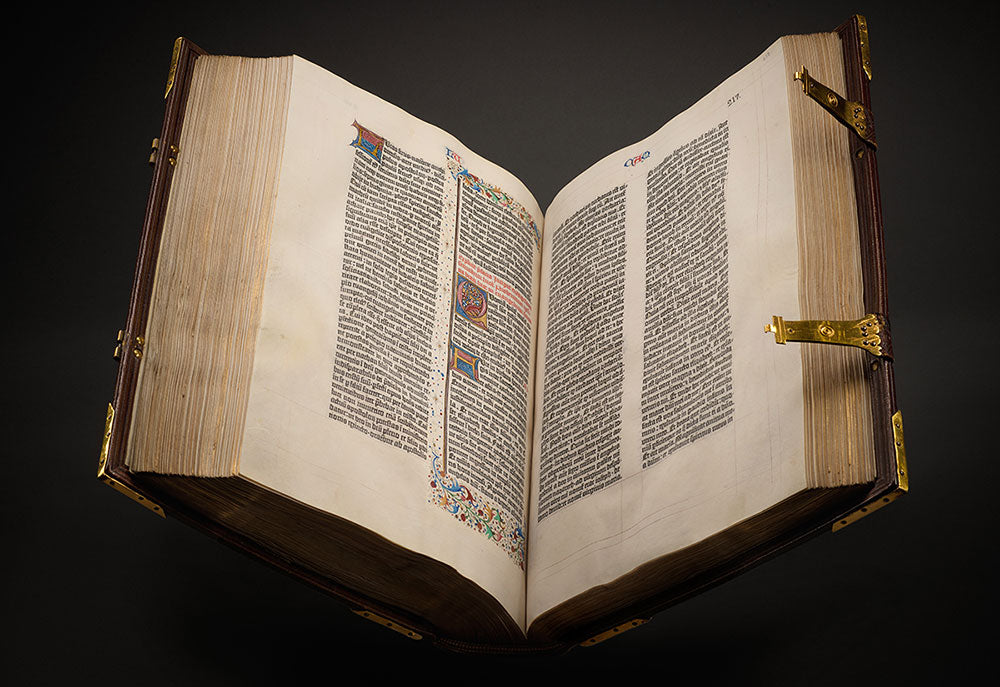The Gutenberg Bible, also known as the 42-line Bible or the Mazarin Bible, is one of the most celebrated and historically significant books in the world. Printed by Johannes Gutenberg in the mid-15th century, it marked a watershed moment in the history of printing and played a pivotal role in the dissemination of knowledge during the Renaissance. This article delves into the fascinating history of the Gutenberg Bible, shedding light on its creation, impact, and enduring legacy.
The Birth of the Gutenberg Bible
Johannes Gutenberg, a German blacksmith, goldsmith, printer, and publisher, is widely credited with inventing the movable-type printing press around 1440. Prior to Gutenberg's innovation, books were laboriously copied by hand, making them rare, expensive, and accessible only to the elite. Gutenberg's invention changed this landscape entirely.
Gutenberg's Bible, completed around 1455, was a monumental achievement in printing technology. He used a revolutionary combination of movable metal type, oil-based ink, and a wooden press to create multiple identical copies of a text quickly and efficiently. This innovation significantly reduced the cost of producing books, making them accessible to a broader audience.
The Gutenberg Bible's Unique Features
1. 42 Lines of Text**: One of the Bible's distinctive features is its name, the "42-line Bible." This name arises from the fact that each page contained 42 lines of text, carefully typeset with movable metal type.
2. Gothic Typeface**: The Gutenberg Bible employed a typeface known as Textura, a blackletter or Gothic script, which was popular during the Middle Ages. This typeface lent the Bible a beautifully ornate appearance.
3. Illumination and Hand Decoration**: Although not every copy was illuminated, some Gutenberg Bibles featured hand-decorated initials and borders, adding to their aesthetic appeal.
4. Quality Parchment**: The Gutenberg Bible was printed on high-quality vellum (parchment made from calfskin), which contributed to its durability and longevity.
Impact and Dissemination
The Gutenberg Bible had a profound impact on society, education, and the spread of knowledge. Its production marked the beginning of the "Gutenberg Revolution," as it enabled the mass production of books. Here are some key aspects of its impact:
1. Wider Access to the Bible**: Before the Gutenberg Bible, copies of the Bible were scarce, and few people had access to them. Gutenberg's invention made it possible to produce more Bibles, allowing a broader audience to read and study the Scriptures.
2. Advancement of Learning**: The availability of printed books, including the Gutenberg Bible, catalyzed the Renaissance and the spread of humanist ideas. It contributed to a surge in learning, scholarship, and the exchange of knowledge.
3. Cultural Significance**: Gutenberg's Bible became a symbol of cultural and intellectual achievement. Owning a copy was a status symbol, and many institutions, including churches and universities, acquired copies for their collections.
4. Preservation of Text**: The Gutenberg Bible helped preserve the Latin Vulgate Bible, which was the standard text used by the Roman Catholic Church at the time. This ensured the survival of the text for future generations.
Enduring Legacy
Today, the Gutenberg Bible holds a revered place in the history of printing and bookmaking. Only about 50 copies of the Gutenberg Bible are known to have survived, with some held in prestigious institutions and libraries worldwide, including the British Library, the Library of Congress, and the Gutenberg Museum in Mainz, Germany. These rare and valuable copies are considered priceless treasures of human history.
In the digital age, the Gutenberg Bible's legacy lives on through digitization efforts that make its pages accessible to a global audience. Scholars, historians, and bibliophiles continue to study this remarkable work, appreciating its significance not only as a religious text but also as a testament to human ingenuity and the power of the printed word.
The Gutenberg Bible, with its groundbreaking printing technology, played a pivotal role in transforming the way information was disseminated and consumed. It bridged the gap between the medieval and modern eras, making knowledge more accessible to people from all walks of life. As a masterpiece of typography and design, it continues to be celebrated as a testament to Johannes Gutenberg's innovation and the enduring power of the written word.


